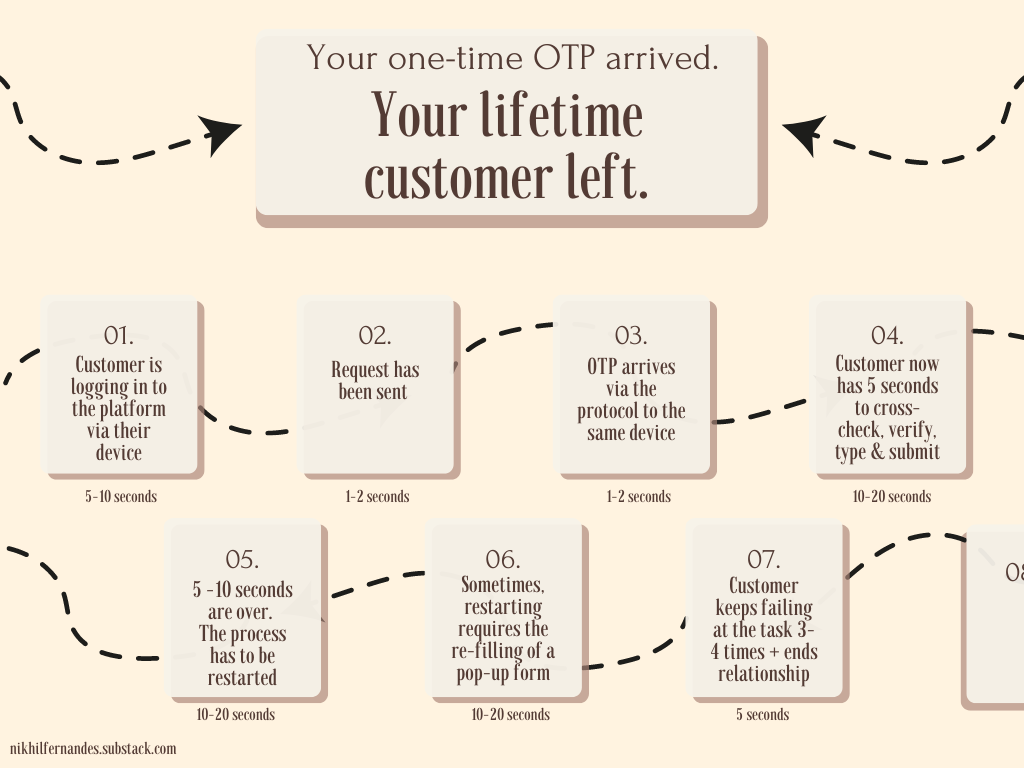Your one-time OTP arrived. Your lifetime customer left.
But, did you notice? And, if you did. How are you improving the Customer Experience?
One cannot imagine life today without an OTP. People write about it. Researchers study the journey. Technology architects constantly see how to make it better. Cyber security architects keep generating codes in their mind to truly make it a better customer experience. UX Designers keep testing different versions of user onboarding processes to gauge which one is the fastest and most delightful for their users. But, there’s one architect governing them all. And, that’s time. Time taken for the process to complete. Time taken by a user to comfortably fill their details.
And, time is the deal maker or the deal breaker. Now, if your user is someone younger and a multi-tasker and they’re quick to grasp numbers and type with lightning speed as the OTP arrives then you’re fine but if it’s an extreme user? What if the user is a senior citizen? What if the user is differently abled? Design doesn’t get over when the screens are made but when the entire journey is made comfortable from end-to-end.
People generally can’t fill OTPs within 10 seconds or even 5. That’s why some platforms, products or services give you a validity of a minute or five or sometimes, even ten. Imagine you’re in an emergency and you’re trying to renew your insurance or suppose you’re trying to download your rail ticket from a ticket-aggregator and you’re already late at the train station. Add server delays or network errors and low network areas and it’s a recipe for a disastrous customer experience.
Senior citizens also use OTPs at their own pace. And, scenarios like this can make them feel slow or even hamper their process to acquire something say an important medicine or downloading a receipt for their pension. That’s why when we design, develop, deploy and optimize we need to keep evaluating our experiences to test if they’re truly successful once they are out of our hands and into the realm of our users.

